by Art Lee
.
1) HOW DID YOU COME TO START TAIKO? WHAT WAS YOUR EXPERIENCE IN THE FIRST GROUP YOU STARTED IN?
I first saw a taiko performance in 1992 by the Sacramento Taiko Dan during my time as a student of culinary arts in the United States. I was so mesmerized by the experience that I looked for anything related to taiko for months until I finally found beginner classes by the Sacramento Taiko Dan.
My first taiko class began on June 21st, 1993 at the Sacramento Japanese American United Methodist Church in Sacramento, California. I was one of those really lucky beginners to start with a teacher like Tiffany Tamaribuchi, who was one of less than a handful of players on the whole continent with master level in nearly every commonly known style of taiko.
When most people think about drumming, either hand drumming or kit drumming come to mind. Taiko on the other hand, uses sticks that are big and heavy. In the beginning at my first class, I felt like I was holding baseball bats in each hand. Back then, Tamaribuchi Sensei was really strict with new students, and we would have to do an exercise called “Uchikomi” where everyone would play the same rhythm for 30 to 45 minutes with no break…being as big as we could be and hitting as hard as we could. Not only could we not move after that, but the next few days were filled some of the most dreadful muscle pain caused just by standing up.
Tamaribuchi Sensei started the Sacramento Taiko Dan in 1989, so I came in four years later at a time when things were really heating up. First, Sacramento Taiko Dan had just been invited to perform at the U.S.-Japan Taiko Festival for the first time. This is easily the largest and most renowned taiko festival outside of Japan, and is produced by her teacher, Grand master Seiichi Tanaka and the San Francisco Taiko Dojo. So, there was plenty of reason to whip her students into stage-readiness. Also, Sacramento Taiko Dan’s fifth anniversary was upcoming…the first big milestone of Tamaribuchi Sensei bringing taiko to the capitol of the most populated state in North America.
Now, I had been a wrestler, weight lifter and practiced Chinese martial arts up until that time, so I was a pretty fit guy. But while I’m sure being fit helped, it still didn’t save me from the absolute muscle pain suffered after the first few classes with Tamaribuchi Sensei. It was through her that I learned much of what continues to be the foundation of my existence in taiko drumming.
.
2) HOW DID YOU MEET ONDEKOZA? WHAT KIND OF EXPERIENCES DID YOU HAVE AS A MEMBER OF THAT GROUP AND IN JAPAN FOR THE FIRST TIME?
Maybe a month before I started my first class with Sacramento Taiko Dan, the first chance to see a professional taiko group from Japan rolled into Sacramento. This was Za Ondekoza – Demon Drummers of Japan, with drums larger and louder than most cars. At the time, they were on a three year tour of North America. Looking back on that time, I feel like I must have been one of the very few people outside of Japan around my age group who saw Ondekoza long before ever hearing about Kodo.
Fast forward to almost one year later, and Ondekoza was back in Sacramento on the same tour; and this time, Sacramento Taiko Dan was to have a workshop with them. During this time, they were secretly looking for two non-Japanese performers, one from the west coast and one from the east coast of the U.S. who would join them for their upcoming Japan Tour which had been planned for years and was being produced by Japan Arts, the top tour production company at the time. While teaching workshops all over the U.S., they allowed each member of each workshop to play one of their largest drums. Participants thought this was just for fun, but as I was told later this was Ondekoza’s method for seeing who was to be scouted for the upcoming tour in Japan.
After my first time playing the drum, I was confused as they asked me to play a second time, then a third time while they watched intently. After the workshop was finished, they invited me to join their Japan Tour.
Beginning training with Ondekoza was extremely different from Sensei Tamaribuchi. While she was detailed in explaining proper stance, movement and ideas behind why your arm does this and your legs do that, Ondekoza was the exact opposite. Some might say this was the stereotypical example of the Japanese martial arts learning environment.
To me, they said “Watch these parts during these 7 – 10 minute pieces from the audience during these five performances. You will be performing all of these parts when we arrive to Japan in two weeks”… That was it!!
So, I needed to watch intently and practice any way that I could without the use of drums. Many walking trips to any destination included big sweeping movements while air drumming “Utsu Hachijo” or “Sogaku” and occasionally seeing passersby with suspicious or worried looks in my direction. After two weeks, we headed off to Japan.
This time to Japan was my first time on a airplane and first time in a foreign country. And it was probably the defining point of my future.
The culture, or should I say the non-obvious culture, in Japan is so very different from any western culture, and is not usually experienced on a short tourist trip to Japan. For most of the time during the Japan Tour, we stayed in an 80 year old, non-renovated almost-open-air flat in which the toilet was simply a deep hole in dirt surrounded by thin walls so as not to be viewed from the outside. Most meals were cooked by the group members, but whenever we did eat in a restaurant, it was an old style bar-shop where the menu had no Romanized letters and even the prices were in kanji (Chinese characters) instead of integers.
.
3) WHAT WAS IT LIKE BEING PART OF TAGAYASU DEN’S ONDEKOZA?
Very different. At first it was difficult for me to understand a group like Ondekoza with a leader who didn’t actually play taiko. I really didn’t understand what his connection was to the taiko world. It wasn’t until some months after joining the group that I learned about his connection.
Den-san believed that the people of Japan were losing their own culture and foundation, and all too quickly allowing it to be replaced by western notions and ideas. He believed that the ideals that make Japan a country of honesty, fairness, punctuality and working together in harmony was slowly being assimilated to the ways of western countries. Den-san was not suggesting western ideals were bad or negative, he just felt they were not congruent to life in Japan and the continuity of the Japanese people and culture.
It was this belief that gave him his vision in forming the original Ondekoza on Sado Island long before differences resulted in him leaving the island and the remaining group members becoming Kodo.
He was also fully open to having non-Japanese members in Ondekoza for various reasons, though one of these was to possibly create in them the understanding of his ideas which could be shared in other languages.
While he wanted everyone in Ondekoza to be world-class performers, he also wanted his members to never forget the toil and hard work it took to become world-class performers. And he believed that running was one way to accomplish that. As any marathoner can tell you, no matter how great of a runner you are, running a full marathon is one of the most mentally difficult, sometimes painful and tiring experiences a human being can willfully endure.
You will rarely ever meet a boastfully arrogant full-time marathon runner because they understand the feeling of brushing against the wall of human limitation each time they race.
He did have other ideas which were very difficult for those around him to understand and follow, but many of his ideas where the backbone in making Ondekoza the group that it is, and were also some of the key foundations to what later created Kodo.
With Ondekoza, I had a chance to see what could possibly be described as the Mecca of the taiko world. We performed in all types of places, from 30 seat meeting rooms to 180 seat mountain venues to 2300 seat grand theaters. We performed in taiko festivals from east to west, all of the way to Okinawa. When traveling we usually had home-stays where members of the group would perform short house performances for the hosts and family. On one occasion, we stayed at the house of the person who built the first rocket for Japan. We collaborated with many different taiko groups both amateur and professional.
For my last concert with the group, we performed in Carnegie Hall in New York. This was all fun, to be sure. But more than that, I learned so much from each experience nearly everyday that my world before I left to Japan and my world after returning from Japan seemed to be galaxies away from each other. My beliefs and ideas had been reconstructed by a different perspective. My desire to see the world and learn more had changed from a small candle to a roaring bonfire.
.
4) WHAT WAS IT LIKE KNOWING AND PERFORMING WITH GRANDMASTER DAIHACHI OGUCHI?
Grandmaster Daihachi Oguchi reminded me much of my father. Both were the same age and both were jazz drummers at one time. But it wasn’t simply that. Although very kind and humble to all around them, both were extremely wellknown giants in their field. In the case of Oguchi Sensei, he is the person renowned to have pioneered and spread the pure performance version of the wadaiko art as we know it today.
When I went to his office and studio to meet him for the first time, he was quite different than I expected. First, he himself, the person who is renowned for creating taiko as a performing art, went to make tea and pour it for me. This might not seem like a big deal to most people, but in Japan, for a person of his stature to personally get up to make and serve tea to a common person…this is a very rare occurence indeed.
He was extremely kind and spoke to me with a genuine sincerity. He allowed me to visit with his group, and when he found that I already knew versions of his compositions, he invited me to be a member of the group. Years later, and after detailed study including 70 – 90 minute versions of some of the most difficult uchikomi sessions I had ever experienced, I was extremely honored to become a member of his elite performing group, Osuwa Daiko – Ashura Gumi.
Where Sensei Tiffany Tamaribuchi was instrumental in my education of the physical aspects of taiko; form and movement, technique, etc. Grandmaster Daihachi Oguchi was my mentor of the intangible art of taiko. It was from him that I learned how to approach the practice and performance of the taiko, not from the first-person viewpoint of a performer, but from the eyes of those who would watch the performance, and with whom I would practice together.
Trust me when I say a whole book could be written about Grandmaster Daihachi Oguchi (actually, a book has been written about him) and my experiences learning from and performing with him for eight years.
5) HOW DID YOU START TEACHING TAIKO IN JAPAN?
Upon moving to Japan in 1998 as a teacher of English, I was extremely lucky to find that the community center in the village where I was based had a set of taiko drums. Luckier still, the community center staff allowed me to use the space and drums whenever the venue was not in use. In exchange, I would perform care and maintenance for the drums and the venue when needed, as well as teach a weekly evening class at the center for free.
Aside from having taught the Friday Night Odaiko Club in Sacramento Taiko Dan, this was my first experience teaching my own taiko class. Most members of the class came from the local group, Koihime Daiko, which usually practiced maybe three to four times a year whenever there was a village event. They were happy to finally have a teacher who could come every week and accepted me without reserve.
In the following years, one class led to two, then three and more. Eventually, the surrounding school would ask for children’s classes, and soon classes in the neighboring city were created.
.
6) HAVING LIVED IN BOTH PLACES, HAS BEING A FOREIGNER IN JAPAN OR A NON-JAPANESE IN THE UNITED STATES AFFECTED HOW YOU ARE ACCEPTED AS A TAIKO ARTIST?
It might sound surprising, but I have been accepted much more as a taiko artist by all levels of my taiko peers in Japan than I ever have been by taiko peers in the U.S. Sometimes this surprises me considering Japan is a country separated on all sides by ocean, and is inhabited by an almost homogenous society, and the U.S. is where I began taiko and is one of the most ethnically diverse countries in the world.
Years of acceptance among taiko peers in Japan sometimes made me forget that the core reason for participating in taiko for some in the U.S. was very different than in Japan and I didn’t fit into that subset. For them it didn’t really matter how much I had achieved, they could not accept me or the journey I had set upon because I am not Japanese-American or Asian-American. It was a painful realization early on, and one that still happens infrequently when I return to the U.S., but thankfully that has been overshadowed by strong support from boundless others in the U.S. taiko community.
.
7) HOW DID YOU BEGIN AS A SOLO TAIKO ARTIST
During the early years in Japan before I began performing with Grandmaster Daihachi Oguchi, local performances with my classes were the norm. However, there came a time when requests for more professional style performances came in. None of my classes could perform to the technical level necessary, and I didn’t belong to or have connections with any other professional level performers or groups at the time.
One client suggested a solo performance. I’d had no prior experience performing solo on stage, but I’d had lots of experience in group performance and thought solo performance couldn’t be that much different. And so, I blindly agreed.
Oh, the horror!!!
I quickly learned that what works in a group doesn’t necessarily work in a solo performance. In a group setting, as with team sports, all members of the group are performing together, and the result of that performance is a combination of different parts becoming one.
With a true solo performance, however, only one person is onstage, and that person is the focus of attention throughout the entire performance. It is the responsibility of that one person, especially to a paying audience, to create a performance that is just as awe-inspiring as a group performance. In Japan, it would be almost a superhuman feat.
Japanese audiences are known for being conservative in their applause of any show group or performer of which they are not familiar, especially taiko performances. Rural audiences doubly so. Granted, they are kind in applauding no matter how appalling the performing might be. But that day, I certainly understood that the applause received was called “giri” applause (applause simply to be kind that I had the audacity to get up on stage and perform in the first place).
This great experience dealt me another blow of humility, and of a newfound dedication to improve myself.
.
8) DID YOU EVER STUDY ANY OTHER TYPES OF MUSIC?
My first instrument was the piano, but I never envisioned become a pianist. It was just a hobby. I didn’t actively study other instruments besides taiko until after I had moved to Japan.
Having access to drums and a space for the time of my tenure as an English teacher afforded the possibility of long undisturbed sessions of practice, creativity and eventually delving into ideas that I had previously not considered by my experience as group performer. I also started to notice a lot more about the performance world of wadaiko that I had not before.
Taiko as a professional performance art is still very young compared to world music styles of many other countries. I began to notice that most rhythms and styles are focused approximately 70% on the right hand and 30% or less on the left, even with very simple rhythms. This greatly limits the potential of professional taiko music and performance when compared with other types of traditional percussive music with which I was familiar.
To combat this limitation, I began to study Samulnori (Korean traditional percussion) and continued for six years, only stopping due to not enough time for working and the necessary four hour commute. For three years I also studied Tam Tam (Guinean drumming). Again, this was during my early years of living in Japan, so I had time to have dedicated rehearsal time…especially in the case of Samulnori.
.
9) HAVING EXPERIENCED A LIFE OF TAIKO IN MULTIPLE COUNTRIES, DO YOU FEEL A DIFFERENCE BETWEEN TAIKO IN JAPAN AND ABROAD?
Oh yes.
The sheer number of taiko groups in Japan means that the opportunities to see various taiko performances and learn different styles are abundant in any part of Japan. Styles of taiko in other places like North America are somewhat limited in number.
In North America before the mid-1960’s, there were few people who practiced taiko, however this taiko practice was mostly a way of uniting only within the Japanese and/or Asian community, and for the most part, taiko was not shared outside of that community. It wasn’t until Seiichi Tanaka, a highly dedicated and proficient student of Grandmaster Daihachi Oguchi and former performing
member of Oedo Sukeroku Daiko, arrived to the United States that taiko began to spread. Grandmaster Tanaka had the same belief as Grandmaster Oguchi that taiko should not be limited to a certain group of people, but should be available to all who wish to learn. He began the San Francisco Taiko Dojo and opened classes to the public. Already established groups often went to him for workshops or classes. Otherwise, many of his own students later founded their own taiko groups in other parts of the continent. As a result, possibly as high as 90% of the taiko groups in North America are influenced by the “Tanakastyle” in one form or another.
Also, the reason for playing taiko is often different. In Japan, apart from the professional groups, practicing and performing taiko is just as much a part of daily life as after school sports or going to the gym.
There is nothing exotic or esoteric about taking taiko lessons in Japan. Taiko classes are available literally everywhere throughout the country and is simply really great fun. Learning taiko is one of the ways to spend quality time with friends, family and/or to get a great workout. Because of how integrated taiko is and also how easy it is to see any level of performance, it is generally necessary to study and hone skills for many years if considering to become a professional performer and teacher, and before being accepted by both audiences and performers as a viable professional taiko performer in Japan.
I sometimes hear taiko students from outside of Japan refer to this consideration negatively as competition within the taiko community in Japan, but it is probably better understood if one sees the resemblance of what it takes to be a top level ballet dancer or pianist in Europe.
Even the same pieces which are played between groups both in Japan and abroad are sometimes different.
As Tiffany Tamaribuchi is a direct student of Grandmaster Tanaka, Sacramento Taiko Dan includes in it’s repertoire some of the pieces written by Grandmaster Daihachi Oguchi. Therefore, I had the opportunity to learn and perform these pieces long before I had ever met the composer. North American taiko groups, as well as European taiko groups, practice and perform countless variations of “Hiryu Sandan Gaeshi” and “Isami Goma”. It wasn’t until I met Oguchi Sensei and learned the original versions of these two pieces along with many others that I found small to vast differences in how the originals were played.
.
10) WHEN AND HOW DID YOU START TOKARA?
The truth is, in the beginning I never really wanted to be a solo performing artist. Even after I became well-known as a solo performing artist in Japan, I still preferred the dynamic of group performance. So, in early 2003, I began a renewed push to start my own professional taiko group.
I was scheduled to go to the U.S. and Canada for a solo concert and workshop tour…my first ever international tour…and I can tell you I was just a little worried. I was returning to the place where I had started taiko drumming as a beginner and kohai. Most of my peers and senpai would still be there, and many of them would be watching closely to see how and if I had progressed during my time in Japan, and was this “Art Lee” person really worthy of teaching workshops back in his “old neighborhood”.
There were a small group of students in Japan who asked about joining me as helpers during my first tour. They were keen on taiko and travel, so I suggested to them to join me in performing a few pieces. Of course, I would need to train them more than the once a week local class, I would need to compose at least three new pieces which would be stage-worthy for a semi-pro concert, and we would need to perform at least once in Japan before the tour.
Concentrated rehearsals began in November 2003, and we were rehearsing mostly arranged versions of traditional pieces plus three original pieces.
Little known to me, the community in the Inadani valley who had given lots of verbal support were looking forward to me creating a group, so when I produced the first concerts in February 2004 in Iida and Nagoya, the tickets were quickly sold out. We had concert dates, we had a full program, we had costumes made…we just didn’t have a name.
Multiple ideas and suggestions came forth, and even up to the first concert, we couldn’t come up with a name. Finally, one member re-suggested “Art Lee Taiko Ensemble”, a simple name which I had earlier turned down for fully disliking my name being the group name. We no longer had time, so we performed our first show with this name.
One week later, I finally came up with the name “Tokara”, and it just felt spot on right in every way.
.
11) WADAIKO TOKARA SEEMS TO BE ONE OF VERY FEW SMALL TAIKO GROUPS WHO HAVE BECOME FAMOUS AND MADE IT ONTO THE BIG STAGE. IS THIS SMALL GROUP SIZE BY DESIGN?
I have always wanted up to twelve members, but for some strange reason, the magic number of performers in Tokara have always been four. We are always recruiting for new members to increase the number of performers. For a very short time it went to five, but for never more than a few months.
In starting this group, I wanted to create something that was different, yet with keeping ties with and showing respect to that which came before my time. I have always loved so many of the traditional pieces I learned both in Sacramento Taiko Dan and since coming to Japan, and so I made it a requirement in Tokara to learn these traditional pieces and the history behind them first before ever learning original repertoire.
For original repertoire, I began to create pieces in which each part would be a challenge for each performer to play in a way where one part would sound like two or three parts melded together. This was also necessary for a small group like ours to sound like a bigger group if we were to perform in larger venues.
As far as the famous part, well I don’t know about that. An amazing amount of time has gone into making the group what it is today, and hopefully making it 1000 times better in the future.
I think sometimes people consider us as famous and therefore, well endowed financially. The truth is exactly the opposite. However, we love what we do and hopefully someday we can make enough financially to finally create a rehearsal studio so that we can at least rehearse everyday and really test the limits of what we can do…and go beyond.
.
12) ANYTHING TO ADD?
I am very happy to be celebrating my 20th year of being swept into this amazing world of artistic sport, musical exercise, and calculated thunder; known the world over as Wadaiko. I am very grateful to have had teachers and mentors who took the time to guide me in the right direction artistically. I feel very much appreciation to every audience member who has ever attended a show in which I have performed, and every participant who ever participated in a workshop I have taught. Without all these people, I could never have come this far. I hope to continue for another 20 years and more.
We are very much looking forward to Wadaiko Tokara’s 10th anniversary next year and hope to see many of you out there.
This article was written on: November 22th, 2013
Original language of this article: English
Pictures: All the pictures were provided by Art Lee
Author: Art Lee
Nationality: United States
Profile:
ART LEE is considered to be one of the leading Taiko artists of his generation. In November 2001, Art Lee received international acclaim for becoming the first person in the world to be awarded an artist visa from the Japanese government to teach Taiko and lead the life of a professional Taiko artist in Japan. On October 15th, 2005, he became the first non-Japanese to win First Place in the Solo Odaiko section of The Tokyo International Wadaiko Contest – the most prestigious and renowned Taiko contest in the world. Since then, he has performed in some of the world’s most prestigious theatres including Aoyama Gekijyo and Suntory Hall (Japan), Tonhalle (Germany), Wielki Opera Theater (Poland) and Carnegie Hall (New York) and is also the only non-Japanese Taiko artist in the world to be selected four times to perform at the annual “All-Stars of Japan” Taiko concert in Tokyo, Japan. Art tours the world both as a solo artist and as the Founder and Artistic Director of internationally touring group, Wadaiko TOKARA. He is also the founder of Suiko and Nadeshiko taiko groups, and the festival group, Haruka in Japan.


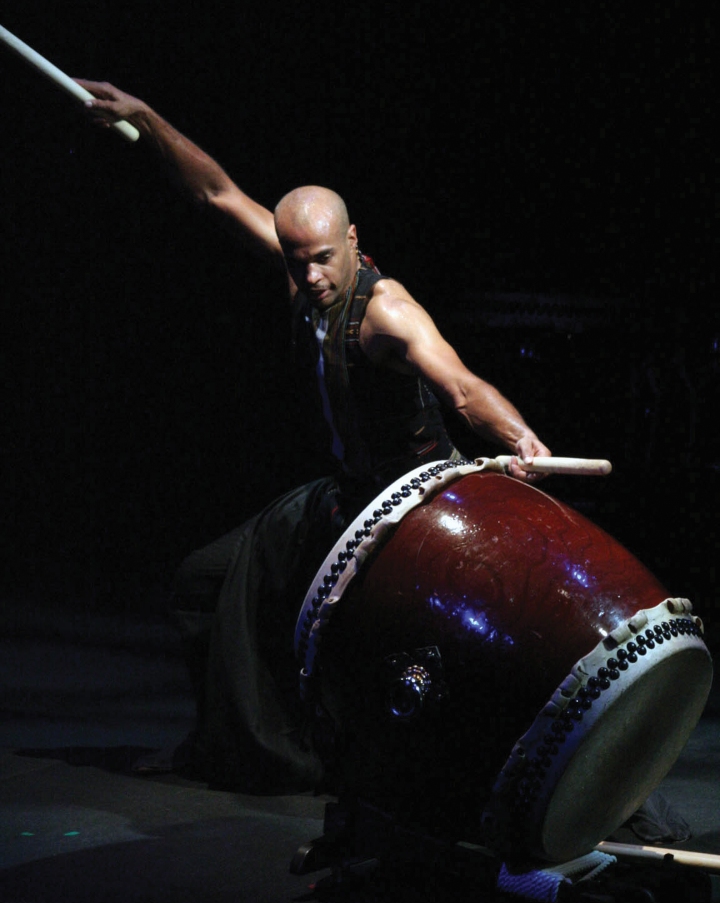
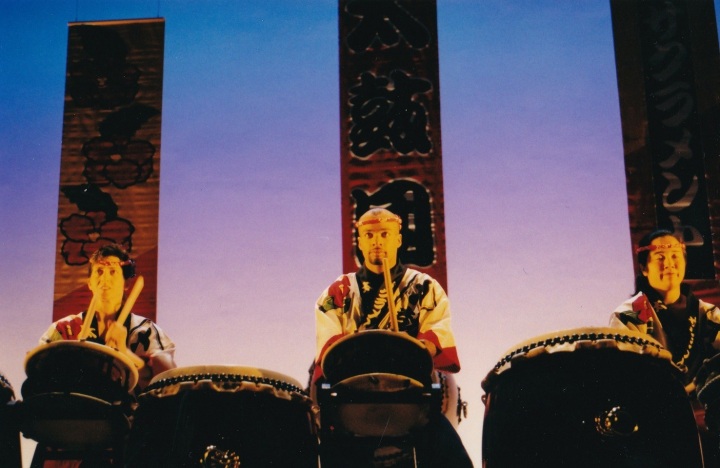
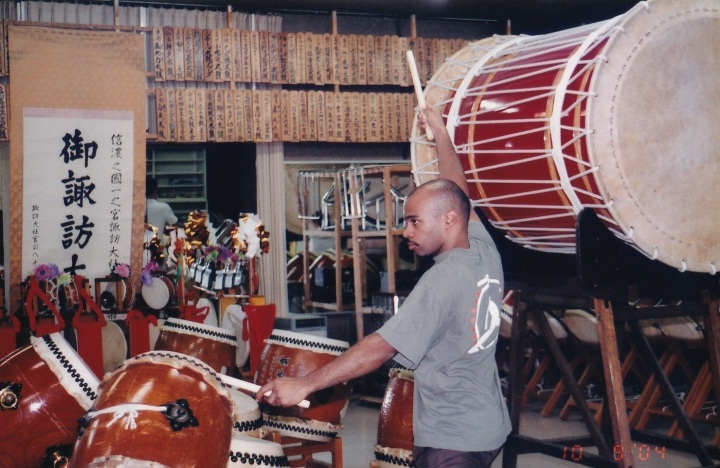
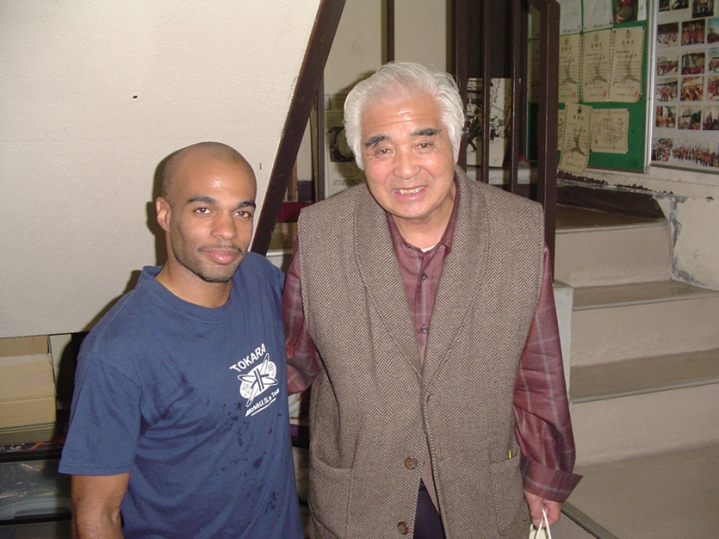
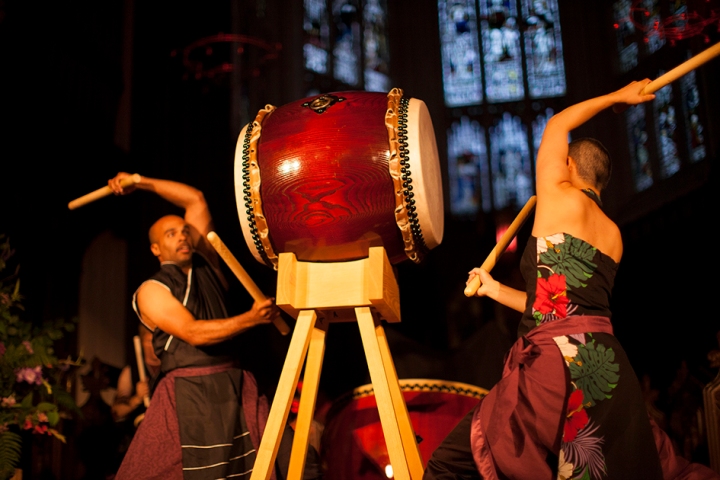
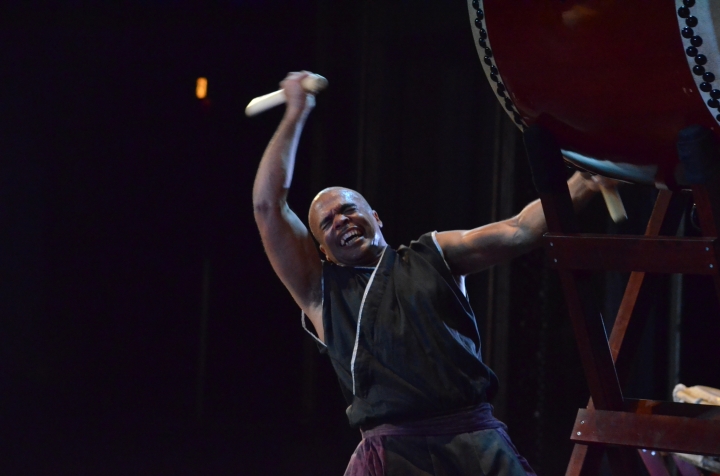
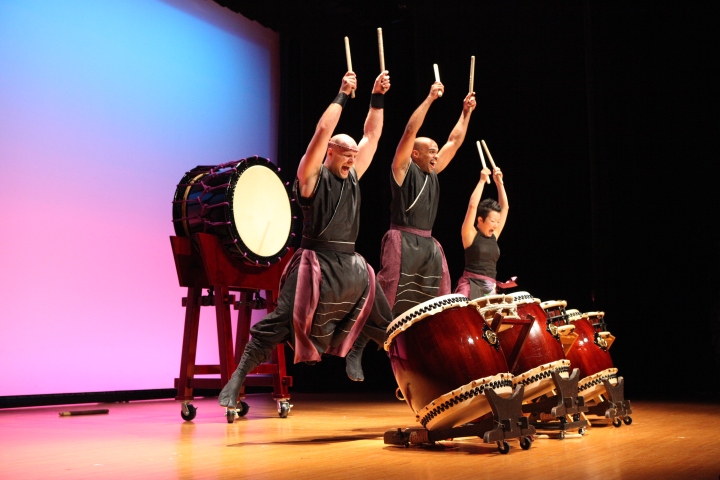
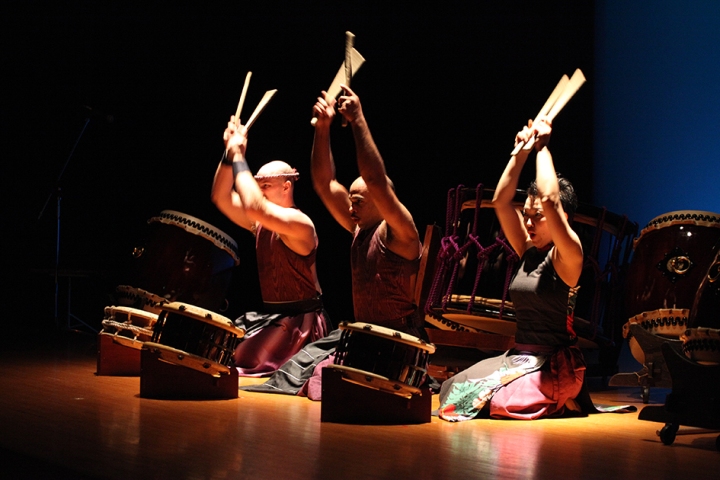
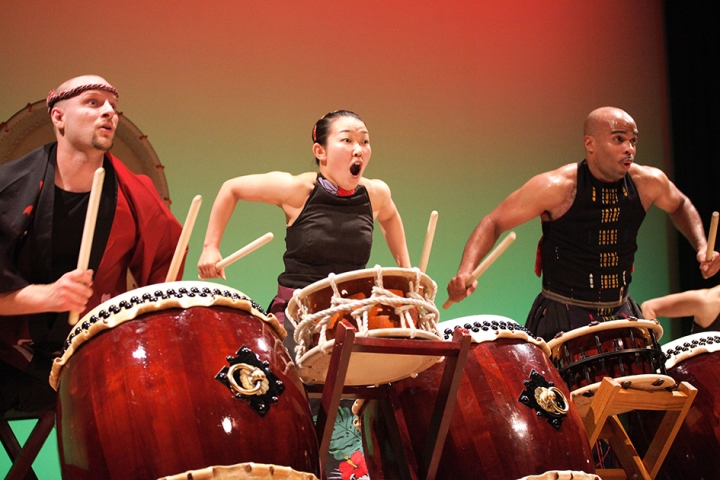
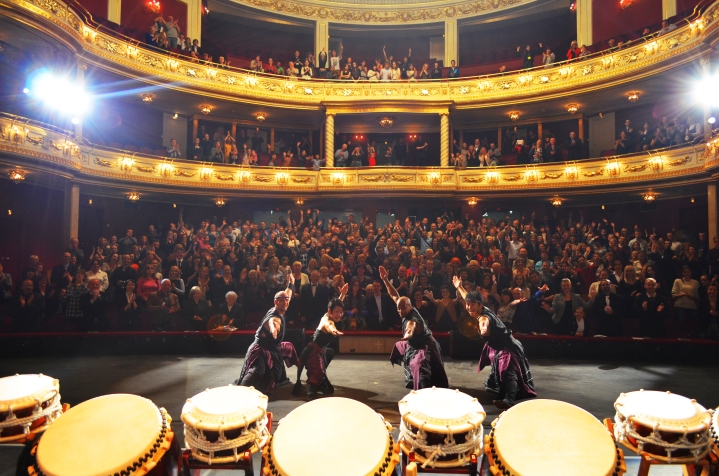
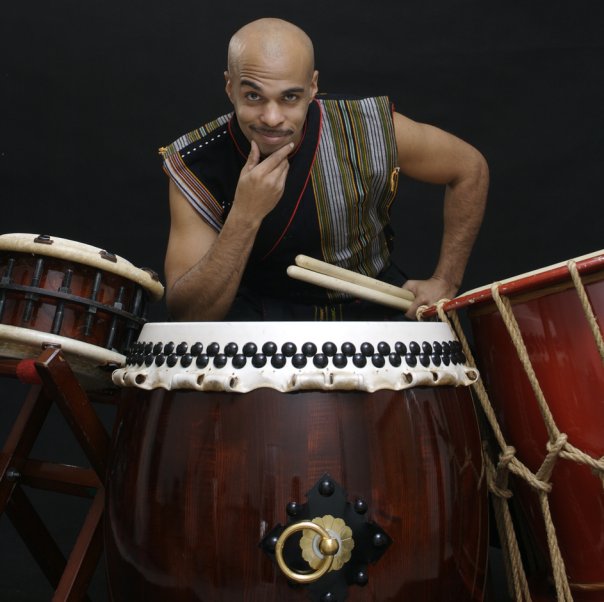
One thought on “Art Lee – My Carreer”